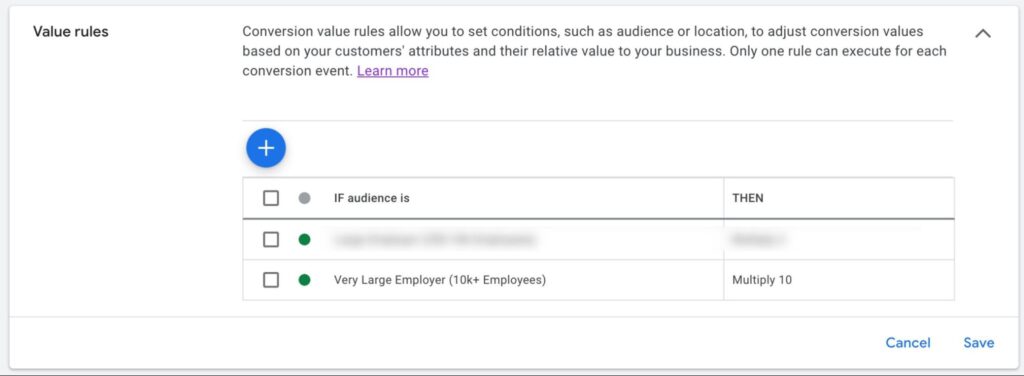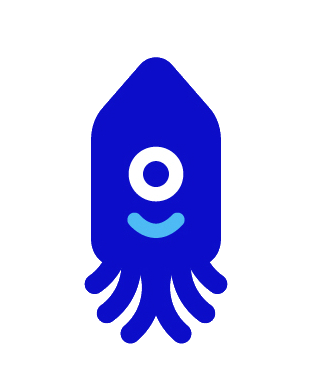How To Improve B2B Lead Generation and Get Higher Quality Leads
Written by: EasyAutoTagging Staff Read time 7 minutes
Effective B2B lead generation is the lifeblood of sales development. Without a steady flow of qualified leads there is no demand for a product leaving the sales team with an empty sales pipeline.
What is B2B Lead Generation
B2B lead generation drives prospective leads to your organization’s sales team. Sales qualifies these leads, creating a pipeline of opportunity you can convert into paying customers.
Capturing a lead is only the first step in the journey. For effective B2B lead generation you have to understand the complete sales cycle.
What happens to a lead once they enter your funnel?
Leads are first categorized as marketing qualified leads (MQL). This step is often automated by enriching lead data and assigning automated rules to identify relevance and intent.
An MQL is assigned to a Sales Development Representative (SDR) who then qualifies the lead further and it becomes a sales qualified lead (SQL). If the SQL is a prospective buyer, it gets passed on to an account manager who nurtures the lead to turn them into an opportunity and eventually into a paying customer.
As you can see, a lead gets touched by multiple systems and teams across an organization as it moves through what we call the sales funnel.
Stakeholders Involved in Effective B2B Lead Generation
Though every organization is structured differently, cross-team collaboration and information-sharing are critical for effective lead generation. For example, a B2B performance marketer will collaborate with the following teams:
Demand Gen team – outlines the strategy, identifies target markets and opportunities, and refines key personas, understanding what problem a prospect is trying to solve and how to position a product and solution.
Marketing operations team – works closely with stakeholders to manage automation, such as setting automated rules to identify MQLs, and minimizing the noise of irrelevant leads. Their work is critical because it ensures that SDRs don’t get backlogged with a high volume of irrelevant and unqualified leads.
Sales Team – Nurtures leads through various sales plays, and coordinates efforts across integrated campaigns to create continuity across the user experience—from becoming a lead to talking to a sales representative. Sales reps or account managers can provide valuable insights into what channels or campaigns are driving the right or wrong types of prospects to the business.
The Importance Of A Cross-Functional Feedback Loop
Now that we have identified teams involved for effective B2B lead generation, we need to look at creating rolling feedback loops. Feedback loops ensure that you are not making decisions using stale data or business insights, and that you optimize lead generationcampaigns with the right data set.
Let’s take a closer look at some example feedback loops:
Demand Generation
Copy, creative and positioning are key factors to ensure you are attracting the right audience. You want to create that aha moment with your target audience. That moment when your prospect says, “I hadn’t thought of that. I need to find out more!”
Prospects don’t need to understand every aspect of your product or service but they need to quickly understand that you can offer value that makes their life easier or gets the job done. Establishing a clear feedback loop with the marketing and demand generation teams keeps everyone aware of business trends and ensures they go after the right people.
Marketing Operations
Understanding how leads are enriched and how they are categorized ensures that you know what to analyze when pulling data out of your CRM. This can also flag data points that generate a high percentage of unqualified leads. In addition, if you identify a high-value or high-intent signal in your CRM, you can use these as conversion events to optimize your ad spend.
Sales Team
SDR or AE feedback can also help you understand which campaigns or content pieces are driving the right leads and at which stage of the buyer journey they come in. This feedback loop can be a bit trickier to establish and automate since information sharing for this type of insights comes from conversations SDRs and AEs have had with prospects directly.
Data Flow
All of the cross-functional feedback loops listed above require human interaction and are important in identifying the correct signals that qualify incoming leads. The next critical step is to establish a data flow so that high-intent signals and events are sent back to advertising platforms. This creates a real-time event-driven feedback loop to maximize ad platform algorithms for campaign optimization.
Generate Inbound Leads Through Paid Media Channels For B2B Lead Generation
Inbound, outbound or ABM tactics are various strategies that can be activated to generate B2B leads. For example, generating leads with paid media channels is categorized as driving inbound leads.
In this post we are going to explore how you can position yourself to get higher-quality leads via Google Search Ads and Meta (Facebook Ads) as viable inbound performance channels.
Leverage Search Across The Consideration and Buying Intent Stages
Google Search Ads provide intent signals by targeting keywords. With a keyword research tool like Ahrefs you can easily identify topic clusters that signal the intent of a user searching for a solution or service that you offer.
With keywords organized based on intent, we can confidently infer that there is a high probability the prospect searching is interested in your product or service.
Tailoring Your Offer For Two Buying Stages
To ensure that you are bringing the right users into your funnel, align the copy and positioning of your search ads and landing pages with your audience. Working closely with the demand generation team can help you refine this.
However, not all users searching for these terms will be in the late stages of the buying cycle so you need to account for users that are in the exploratory stage. A great way to engage users in the consideration stage and bring them into your funnel is to leverage site link extensions.
Including site link extensions on your search ads that drive to high-quality gated content, such as guides and how-tos, ensures you are generating leads and not alienating potential prospects that are earlier in the buying stage.
Leverage Value Rules For B2B Audiences
Google does not have a ton of B2B audience targeting options but you can leverage their employee size audiences using value rules. [need to finish this sentence]
Conversion value rules allow you to adjust conversion values based on conditions, such as audience. Google’s smart bidding will account for these value rules at auction time bidding in real-time.

For example, if you are focused on driving strategic leads from companies with more than 10K employees you can increase the value multiplier to reflect this using value rules.
Scale Search Using High-Value Conversion Signals
Focusing on high-intent search terms will quickly cap scale. There is just a finite number of people actively searching for your solution in the bottom of the funnel.
To scale search campaigns you will want to leverage broad keyword match types. Broad match keywords are a great way to expand your audience reach on search. For broad match campaigns. Google’s algorithm, similar to Facebook, focuses on targeting users likely to take an action. As a result, capturing and sending high-intent conversion signals back to Google Ads is critical for campaign optimization and generating high-quality B2B leads at scale.
Effective Facebook B2B Lead Generation
Facebook ads is not the first platform that comes to mind as a B2B marketing channel. However, your target audience spends time there and you can reach them effectively with good creative and the right offer.
The Drawbacks of B2B Marketing on Facebook
Users in the Meta ecosystem (i.e. Facebook or Instagram), are not actively looking for B2B solutions. In addition, you have limited B2B intent signals and B2B audience targeting. As a result, trying to get a user to directly request a demo from browsing their feed is highly unlikely and extremely inefficient.
Effective B2B Interruption Marketing on Facebook
You can, however, interrupt a user’s stream of information by offering high-quality content such as guides, how-tos or events. Offers like this not only trigger interest for your relevant audience, they are also a low friction entry point where the user gets something of value in return.
Although Meta can be a very efficient channel for B2B lead generation, it requires a Facebook CAPI integration and close work with the Demand Generation and Sales teams. The demand generation team can help you better understand your buyer persona and, what content resonates with them. On the other hand, you would want to work closely with the sales team to coordinate sales plays, understand lead quality, and improve your offers based on prospective customer feedback.
Expanding Audience Targeting
The effectiveness of Facebook interest audiences for B2B can vary. In addition, hyper-focused audience segments tend to be too restrictive on delivery. However, lookalike audiences built on strong seed lists such as high-intent conversion signals or high-value customer lists can be effective in reaching your target audience.
Defining High-Intent Data Flow
B2B lead generation requires that you send quality, high-intent conversion signals back to ad platforms. With the right signal, the algorithm can optimize delivery and reach users that have a high-propensity to convert.
If we choose top-of-the-funnel conversion signals — signup form completion for example, our ability to determine the quality of our leads is limited.
If we focus on bottom-of-funnel events, the time delay of our feedback loop can become ineffective for campaign optimization. For example, if the average deal takes 60 days to close, do not wait to make optimization every 60 days.
This is where you dig into your system, processes, and data.Talk to the demand generation, marketing operations, and sales teams to identify high-intent signals that live within your CRM. Try to identify signals that occur within the first 7-days of a lead entering your funnel. For example:
MQL of a specific company size.
SQL of target segments.
Once you have identified these leads you want to send them back to Google Ads and Facebook in real time. This creates a dynamic feedback loop where high-intent conversion signals are the drivers that improve B2B lead generation.
Conclusion
Effective B2B Lead Generation determines the success of B2B businesses that rely on a steady flow of demand from leads. Paid advertising on platforms such as Google and Facebook Ads are channels that can increase inbound leads. To do this effectively, understand the limitations of B2B targeting across each ad network and identify the right content/offer and channel alignment. In addition, leverage audience expansion to establish a high-intent conversion data flow using your first-party CRM data set.
AUTHOR BIO:

The EasyAutoTagging staff is made up of seasoned pros in digital marketing, marketing analytics, and ad tech. They’ve brought a wealth of experience and hands-on knowledge to our blog and help documentation over the years. From in-depth articles on the latest industry trends to easy-to-follow guides. You can explore more of their articles here.
Leave a comment